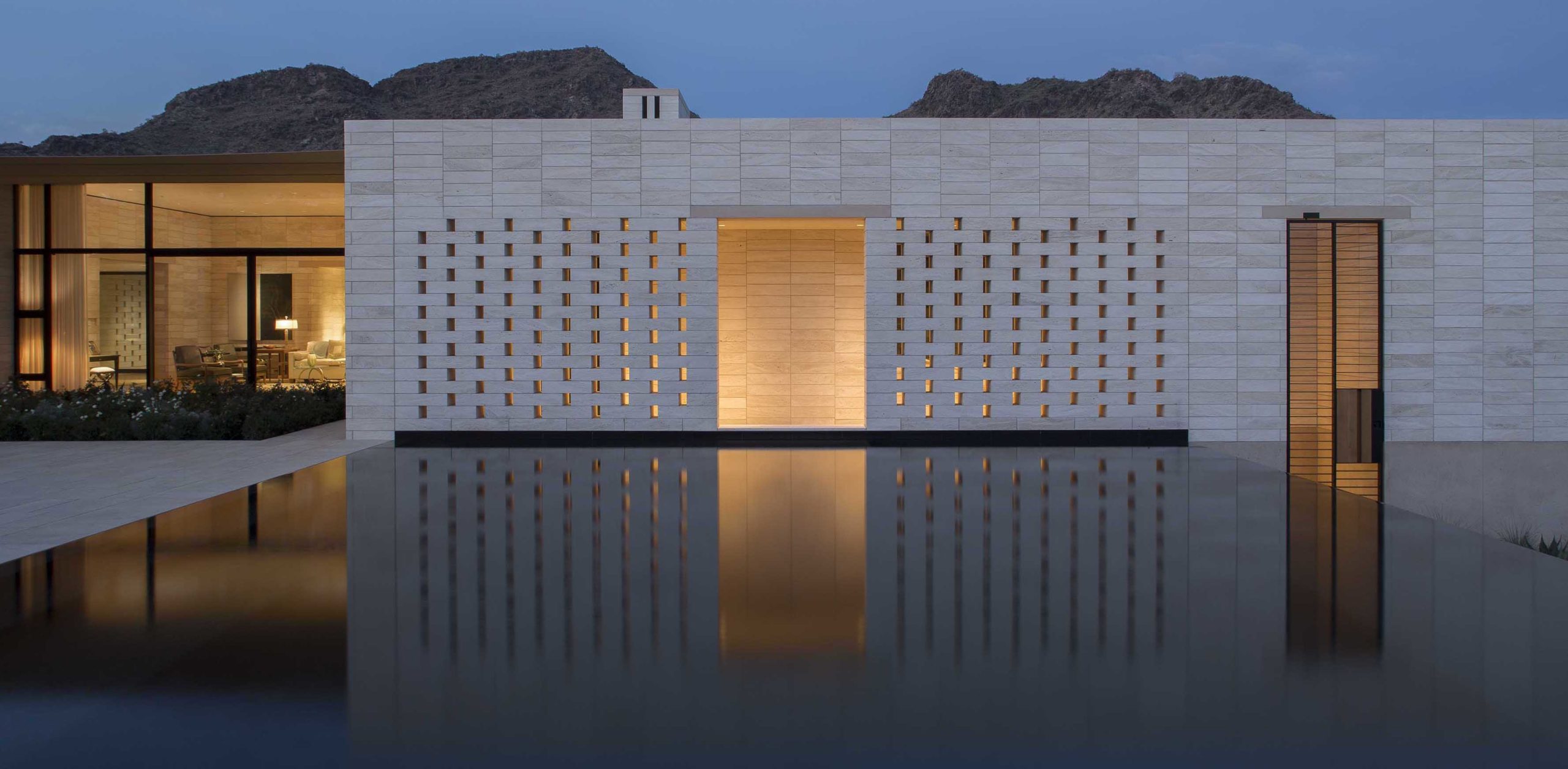A new survey conducted by Architizer in collaboration with Z by HP has revealed the extraordinary impact that the COVID–19 pandemic has had on architects and engineers. The survey focused on AEC professionals’ evolving relationship with technology during this unprecedented year, looking at a range of issues from design and communication to the psychological wellbeing of staff. View the full survey and read our findings below:
View Tech in Architecture Report
The survey reveals that almost 80% of AEC professionals worked remotely during 2020. The COVID–19 pandemic has undoubtedly transformed how the profession practices, with the both design processes and team communication now being conducted digitally. However, this is not a new phenomenon for all designers: More than 28% of architects say they worked remotely even before 2020, indicating that a shift towards online collaboration and a fully digital workflow was already well underway before the pandemic closed offices around the globe.
1. Remote Working Proves Positive Yet Challenging
The survey results revealed both positive and negative impacts of remote working on the efficiency, coordination and cohesion between AEC team members. Arguably the biggest advantage cited for the remote working phenomenon related to the flexibility to select and customize their personal working environment, as well as the time saved by no longer having to commute to and from the office.
The vast majority of respondents cited benefits that relate to an improved work-life balance — flexible working location and hours, proximity to family and a broader sense of freedom were among the most common selections.
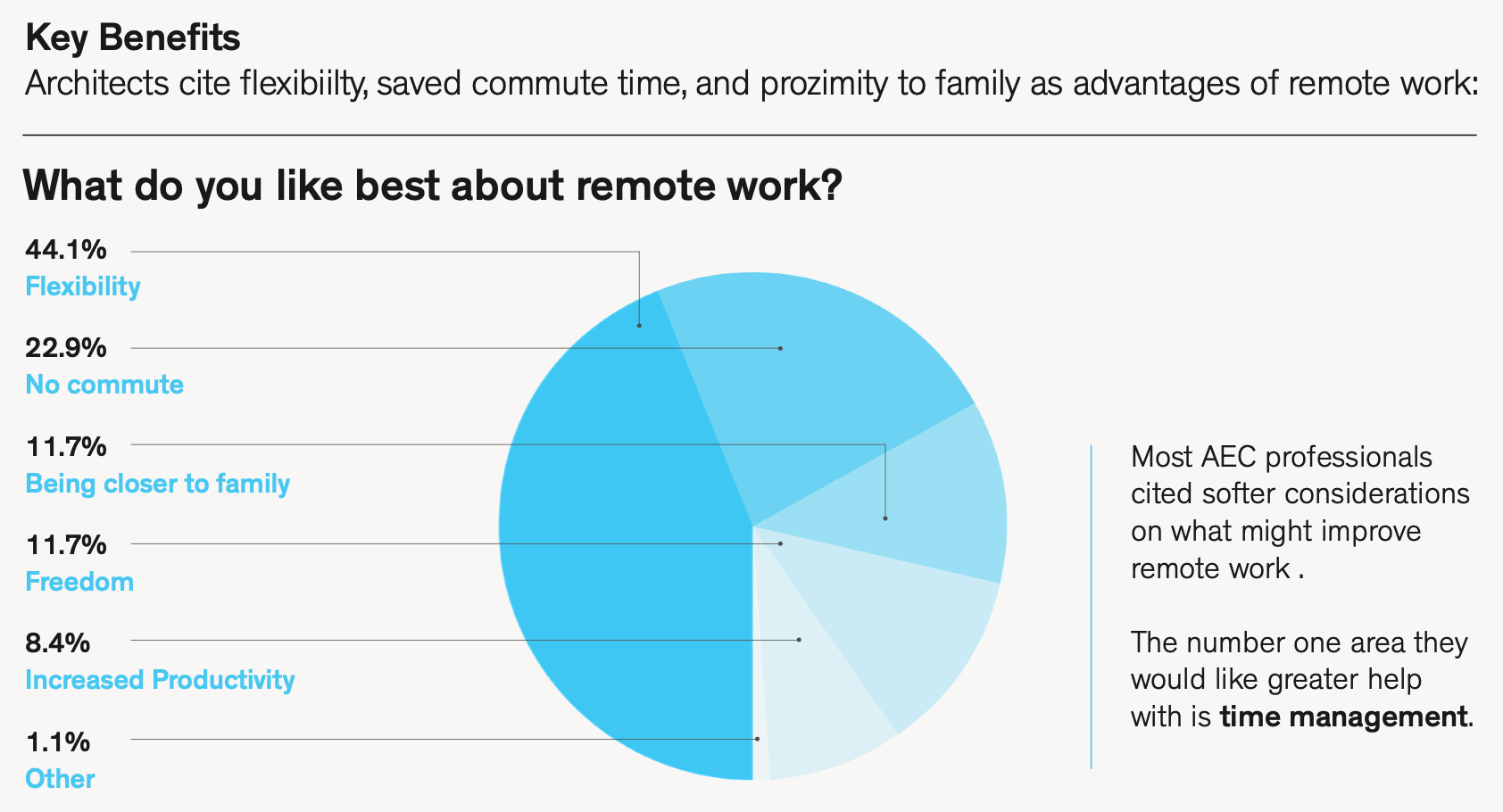
On the flip side, a third of respondents reported struggling to keep a clear separation between work and home life. The need for more well defined home offices with clear boundaries, physical or otherwise, is rising across the profession. The second most common challenge in this area pertained to communication with colleagues, with 17.7% of respondents missing the benefits of in-person collaboration.
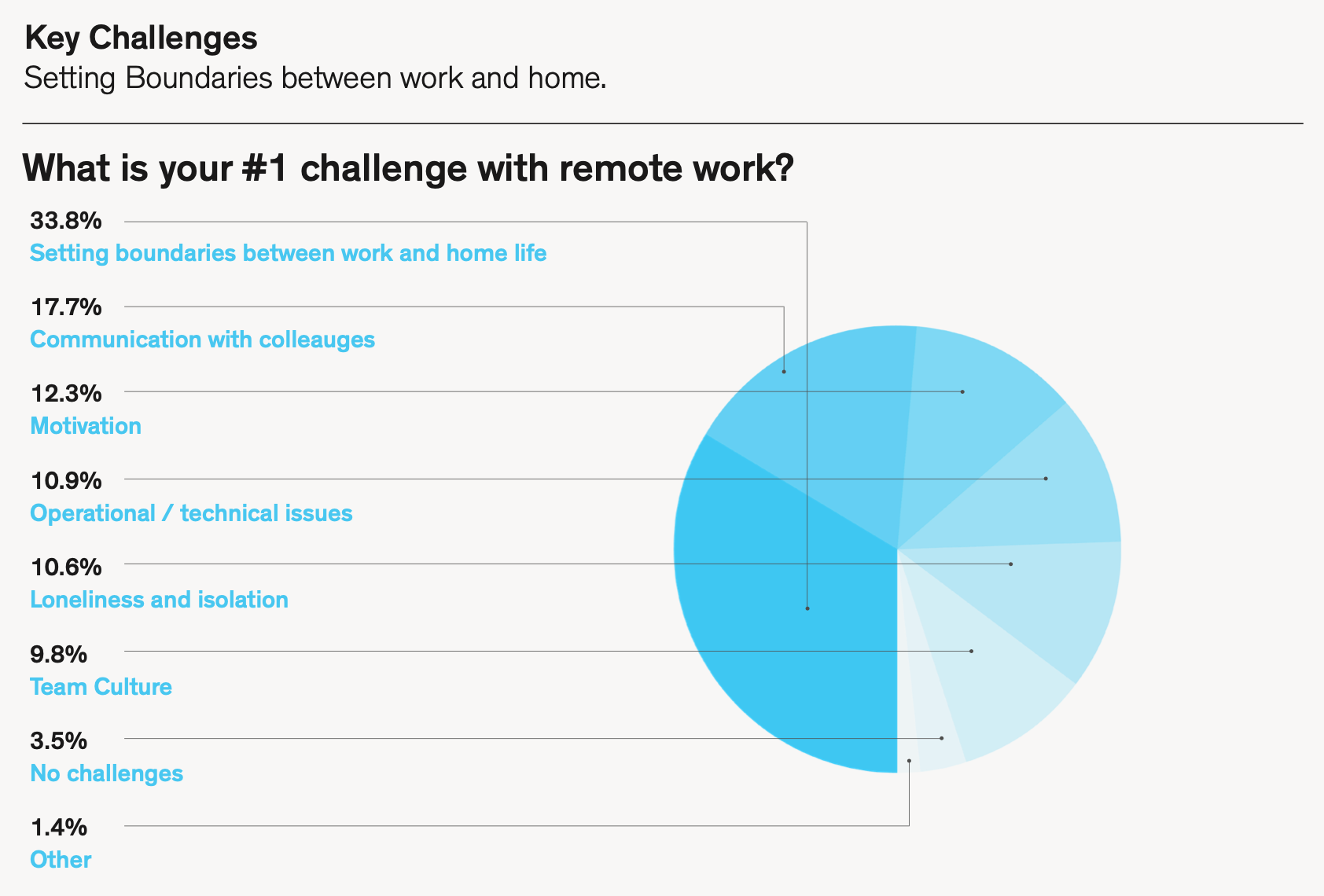
Despite these challenges, the survey suggests that the remote working experience has proven overwhelmingly positive for AEC professionals. One of the most significant findings in the survey relates to respondents’ preference to continue working away from the office, even after the pandemic has subsided. Almost half of all respondents (46.3%) expressed a desire to continue working from home indefinitely, with only 1 in 8 (13.9%) sure that they would like to return to the workplace.
2. Communication Tools Are Now as Vital as Design Software
Technological performance is key to the success of architects working from home, with 77.9% naming a powerful computer or laptop as an essential tool. AEC professionals also cited displays as vital to their workflow, with a large number of respondents naming either large or dual monitors among hardware they regard as essential. It appears that professionals are aiming to replicate the technological advantages of the office environment at home, as far as possible.

In terms of software, communication tools have risen hugely in significance since the beginning of the pandemic. A huge 87% of respondents cited communication applications such as Zoom and Skype as being among the most essential software in 2020, placing them above even the most ubiquitous design applications, such as Revit. As architects attempt to mitigate the loss of face time with their colleagues, collaboration tools such as Microsoft Teams, Slack and Discord have also risen markedly in importance.
Another interesting insight surfaced by the survey responses was just how common it is for architects to connect back to their office remotely. 57% of respondents stated that they utilize the cloud to connect back to company servers when working at home. If remote working becomes a permanent part of life for architects, the concept of a central server for all company work may need to be reevaluated.
3. The Computer of Choice in 2021 is Mobile
AEC professionals are split almost exactly 50/50 between primarily using a laptop or a desktop. This is a big shift over the past five years: In Architizer’s previous survey on technology in the architectural profession, 80% of architects were primarily using desktop computers.
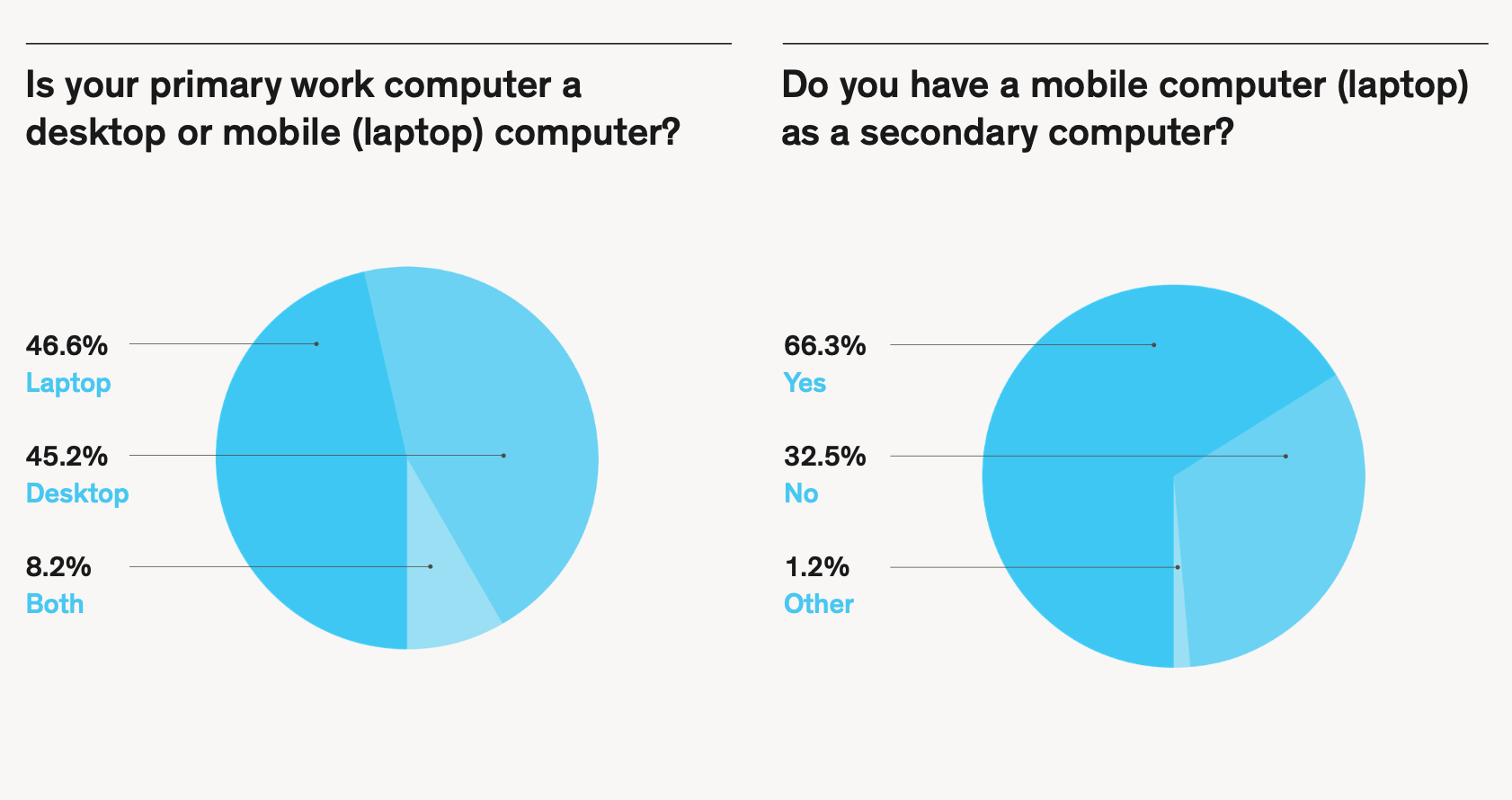
Furthermore, two thirds of respondents that said their primary computer was desktop also stated that they use a laptop or mobile workstation as a secondary device. This means a total of 76% of respondents utilized a mobile computer in some form to get their work done in 2020.
- Reduced need to compromise: Mobile workstations now provide power equivalent to a desktop, with all the advantages of a laptop.
- Mobility at home: People working remotely during the pandemic require greater flexibility to move between spaces while working (to provide space for family members, or seek a quiet space for certain tasks)
- An uncertain future: Some architects may be waiting to see whether they will be required to return to the office before purchasing a desktop computer for a more permanent home office.
4. In Contemporary Practice, Power Is Everything
When asked to describe their ideal computer architects overwhelmingly described a powerful, portable computer able to handle their visualization needs. While AEC professionals now require their computers to render 3D models and process complex algorithms for generative design, they are less willing to tie themselves to a desk in an office, and technology must continue to be developed to meet their evolving needs.
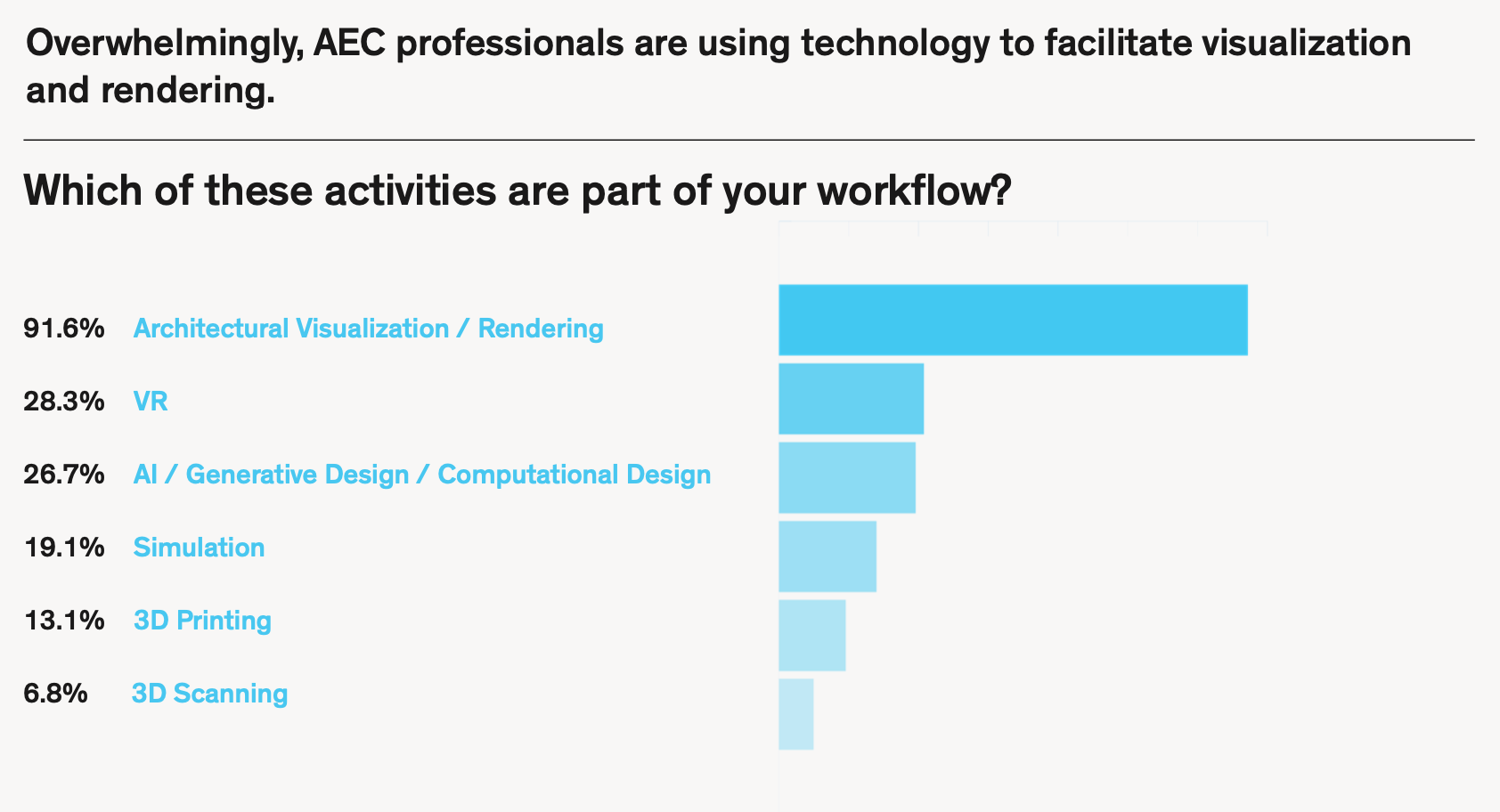
A huge 91% of respondents cited architectural visualization and rendering as part of their workflow. This result indicates that architects are increasingly creating their own visualizations rather than hiring the services of a dedicated rendering studio. This may be down to practical or economic reasons, but may also be due to the fact that the architects’ own hardware and software is now capable of producing the high-end results they and their clients require.
Other technologies being increasingly adopted by the industry include virtual reality (VR) and generative design, which were cited by 28% and 26% of correspondents respectively.
The biggest takeaway from this year’s Architecture + Technology survey is that, while 2020 was no normal year, the working conditions it has necessitated might become the “new normal.” While the pandemic forced AEC professionals to adopt new hardware and software for remote working whether they liked it or not, the profession has been pleasantly surprised by the outcome. This has led many in practice to re-examine their workflow and work-life priorities for the long-term.
With the rise in collaborative tools and apps for ease of communication, this shift is more easily facilitated in architecture than most professions. For this reason, mobile workstations — balancing immense processing power with the lightweight and compact qualities of a laptop — look likely to become the standard hardware for the profession.
Whatever the post-pandemic world looks like, one thing is clear — the practice of architecture, engineering and construction will continue to advance with the help of powerful, mobile technology and innovative software solutions.
View Tech in Architecture Report







